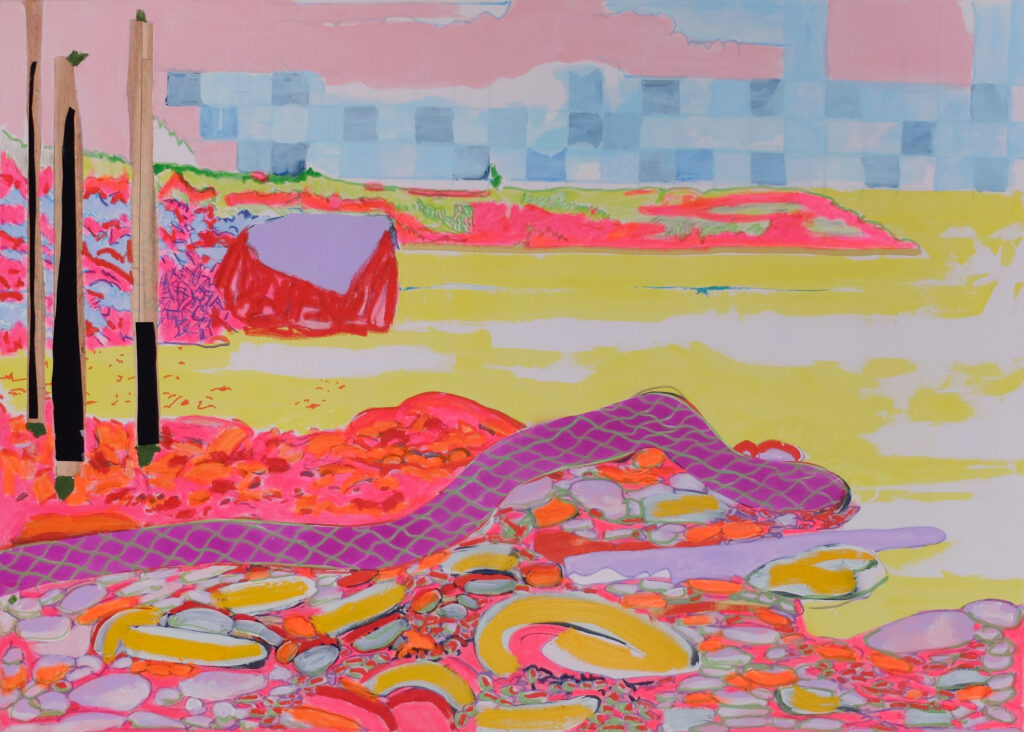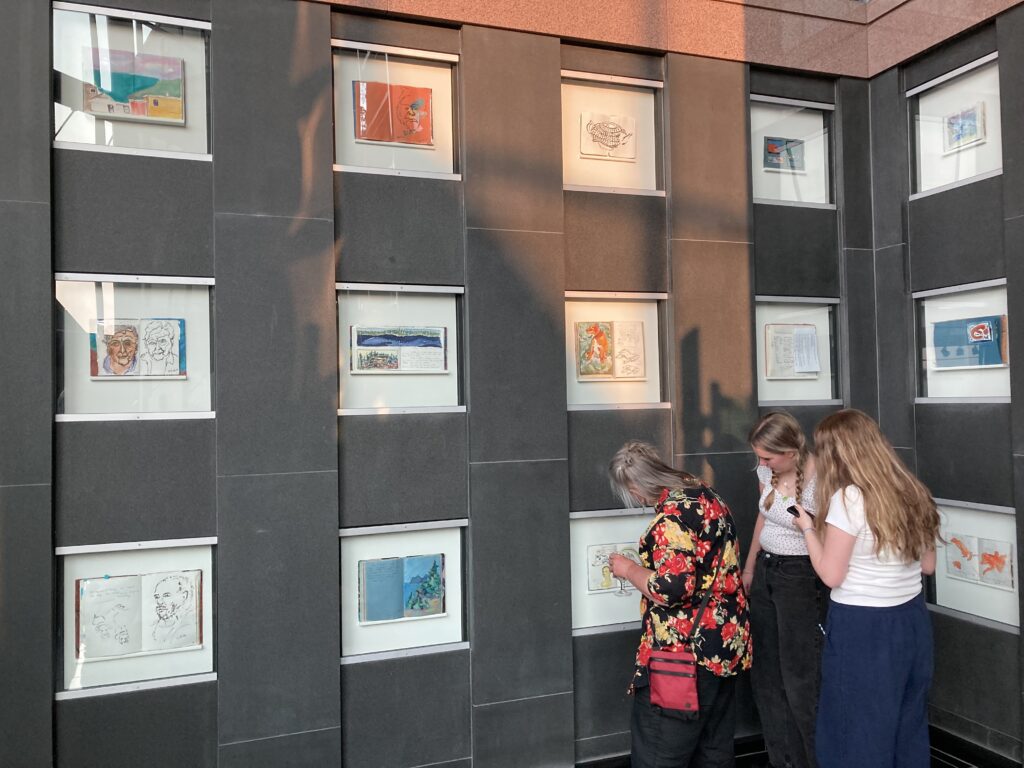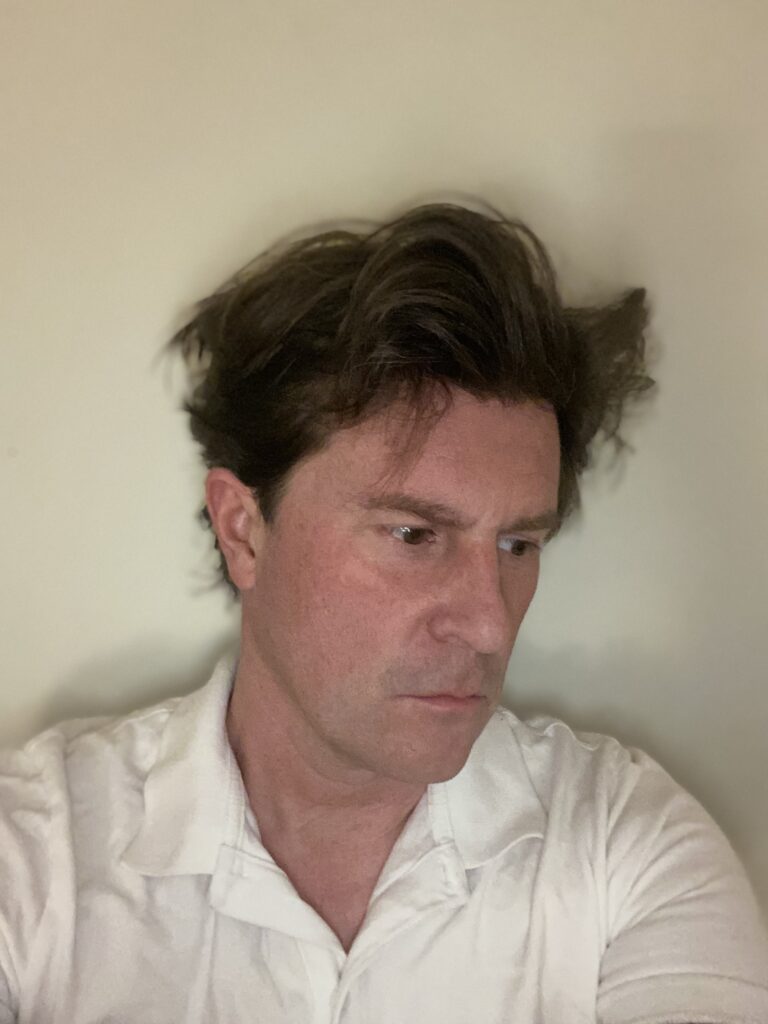Mark O’Brien: I wanted to write a film about confrontation
June 2022
Mark O’Brien’s The Righteous marks his debut as a director, writer, and star of a feature film, a cinematic hat trick he’s been steadying building towards for years. Along with considerable theatre experience, for six seasons he earned acclaim nationally and beyond as the beloved, befuddled Des Courtney with the popular Republic of Doyle, and then launched into performances in Hollywood hits like Arrival and Marriage Story and celebrated series like Halt and Catch Fire. His current roles include the TV shows 61st Street and Perry Mason. In interviews he’ll credit it all to a mix of luck and preparation. What he doesn’t he doesn’t cite is his obvious talent and what must be tremendous energy.
The Righteous was filmed over a 15-day shoot in and around St John’s in December 2019. Even while fulfilling his trifecta role O’Brien was flying out to film scenes in the immigration drama Blue Bayou (whose cast included Alicia Vikander). Post-production continued through the COVID lockdown.
O’Brien, 38 and now based in Los Angeles, has written, directed, or produced almost a dozen short films, as well as come on board as editor and cinematographer; he also produced and starred in Adrianna Maggs’ 2019 feature Goalie, where he appeared as famed, and famously troubled, hockey goalie Terry Sawchuk.
Moving from shorts to a feature is a big step, but it’s a natural progression. “I’ve been thinking about this and I keep coming back to a line in the film,” O’Brien said. “When the priest, Graham (Nigel Bennett), says to Frederic (Henry Czerny), ‘Be careful what you wish for, be certain what you pray for’.” That definitely fits the ethos of making a film, O’Brien said. You can make it happen. If you can make a short film you can make a longer one – it’s just not the easiest thing in the word. “It is hard getting it together. But there is a way to do it.”
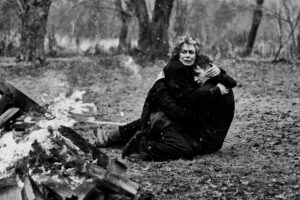
The Righteous stars Czerny, Mimi Kuzyk (Ethel), and O’Brien (Aaron Smith), and a calibrated, thoughtfully selected small cast such as Kate Corbett, punching above her weight as the troubled, unbridled Doris. O’Brien has said he wanted to write a film “about confrontation,” and this measured, gripping, unsettling film is the result.
O’Brien, who watches a movie a day, writes from images and the first he had with this story was Frederic praying. And the movie opens with Frederic, in spiritual anguish, beseeching God for some kind of atonement, or, very possibly, punishment. Frederic’s religious grappling and self-obsession with judgement is a kind of trap, O’Brien says. “If you go down that path it leads to complete narcissism.”
We quickly learn that Frederic is a former priest, who served “up North”; now he is married to Ethel and they have just suffered the loss of their only child, a little girl. An unexpected visit from Doris establishes that she is actually the birth mother, though it’s not certain who else knows this. Then later, in the night, a mysterious, and mysteriously injured, young man stumbles onto their property. He says his name is Aaron and he got lost travelling to meet a friend. In their ensuing conversations, Aaron offers Frederic a stark ultimatum, and a polarizing decision forms the hub of a film that is literally black and white.
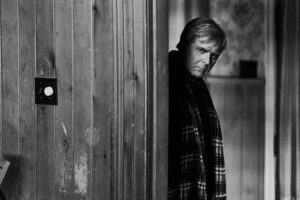
O’Brien has said he wanted to shoot in black and white because it lends the setting a timeless quality. It separates the audience from expectations brought to viewing, say, a story unfolding “in Philadelphia in 1968.” It also gives viewers a sense of unreality, because the world is not black and white, it is in colour. Adding to this sense of unfixed-ness is the non-specific geography. Aaron’s alleged origin in the “South” counterbalances Frederic’s past up “North” and no other places are named.
All in all, the patina is Gothic. O’Brien hesitates to dub it a horror film because he prefers not to pigeonhole a story with so many different elements. And one drawn skillfully through the actors, their faces, gestures, words, and silences. O’Brien has said he wrote Kuzyk’s role specifically for her “because she also looks like she knows something no one else does, and that is something she doesn’t want to face.” Corbett has a completely different energy, a rawness that can turn her inside out, and introducing her changes the dynamic and knocks any inter-personal balance akilter. And Czerny, whom O’Brien had worked with before, was a solid, trusted choice. Their increasingly harrowing exchanges were buttressed by genuine camaraderie on set, which is the kind of atmosphere O’Brien fosters, for cast and crew alike. He’s worked with Amy Adams, Kevin Bacon, and Courtney B Vance, to name a few high-profile names, and has said their professionalism “is never ending. They don’t get tired. They don’t complain.”
O’Brien isn’t complaining, and he doesn’t appear tired either. Busy as he is with acting, and promoting his new feature, he still finds time for writing, and has several screenplays in various stages of development.
The Righteous is screening at Scotiabank Cinemas. O’Brien will attend the showing June 3, which will be followed by a Q&A with CBC Radio’s Tom Power.

